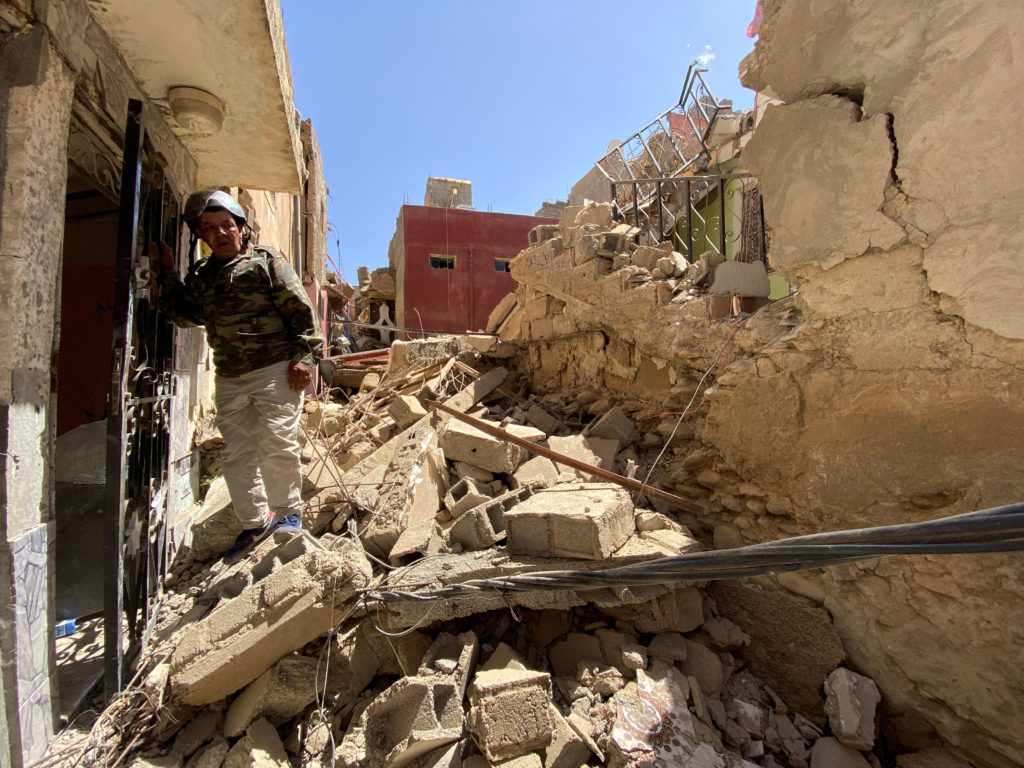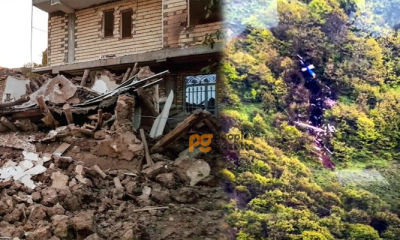
Foreign
Morocco Earthquake: A Rare and Deadly Disaster

Morocco was rocked by a rare and powerful earthquake on Friday night, which claimed the lives of more than 1,000 people and caused widespread damage to buildings in rural villages and the historic city of Marrakech.
iexclusivenews reports that the quake was the strongest to hit Morocco in over a century, and it caused many buildings and walls in ancient cities made of stone and masonry to collapse, as they were not built to withstand such strong shaking.

The quake measured 6.8 on the Richter scale and its epicenter was located about 100 kilometers (62 miles) south of Marrakech, near the town of Ouarzazate, according to the U.S. Geological Survey. It occurred at a depth of 10 kilometers (6 miles), which means it had more impact on the surface.
This online news outlet learned that the quake was felt across Morocco, as well as in neighboring Algeria, Spain, and Portugal. It also triggered landslides, blocked roads, and cut off electricity and water supplies in some areas.
How did people react?
People who were asleep when the quake struck woke up to a terrifying scene. A man who was visiting a nearby apartment said dishes and wall hangings fell, and people were thrown off their feet and chairs. A woman said she ran out of her house after feeling an “intense vibration.’’ A man who was holding a child said he was shaken awake in bed by the quake.

State television showed people gathering in the streets of Marrakech, afraid to go back inside buildings that might still be unsafe. Many of them wrapped themselves in blankets as they tried to sleep outside.
Some people prayed and recited verses from the Quran, while others tried to call their relatives or check social media for updates.
“I was terrified. I thought it was the end of the world,” said Fatima Zahra, a resident of Marrakech.
What was the impact?

A man walks past a damaged wall of the historic Medina of Marrakech, after after an earthquake in Morocco, Saturday, Sept. 9, 2023. A rare, powerful earthquake struck Morocco late Friday night, killing more than 600 people and damaging buildings from villages in the Atlas Mountains to the historic city of Marrakech. (AP Photo/Mosa’ab Elshamy)
The full extent of the damage and casualties was not known as rescuers faced difficulties in reaching the remote mountain villages that were hit the hardest.
At least 1,037 people died, mostly in Marrakech and five provinces near the quake’s epicenter, and another 1,204 people were injured, Morocco’s Interior Ministry reported Saturday morning. Of the injured, the ministry wrote, 721 were in critical condition.
Rescuers worked through the night, looking for survivors in the dark, dust and debris.
Most of the small village of Moulay Brahim, nestled on a mountainside south of Marrakech, was destroyed after walls crumbled, windows shattered and more than a dozen homes were reduced to piles of concrete and bent metal poles. At least five residents were trapped.
Ayoub Toudite said he had been working out with friends at the gym when “we felt a huge shake like it was doomsday.” In 10 seconds, he said, everything was gone.
“We found casualties and people running and kids crying,” he told The Associated Press. “We never saw anything like this, 20 deaths in the area, 30 injuries.”
Rescuers were using hammers and axes to free a man trapped under a two-story building. People who could fit into the small space were giving him water.
“We are all terrified that this will happen again,” Toudite said.
The leader of a town near the earthquake’s epicenter told Moroccan news site 2M that several homes in nearby towns had partly collapsed, and electricity and roads were cut off in some places.
What was the damage to cultural heritage?
The quake also damaged historic buildings in Marrakech, one of Morocco’s most popular tourist destinations and a UNESCO World Heritage site.
The famous Koutoubia Mosque, built in the 12th century, was damaged, but the extent was not immediately clear. Its 69-meter (226-foot) minaret is known as the “roof of Marrakech.” Moroccans also posted videos showing damage to parts of the famous red walls that surround the old city.
Other landmarks that suffered damage included the Bahia Palace, the Saadian Tombs, the Ben Youssef Madrasa, and several museums and gardens.
The quake also affected other cultural sites in the region, such as the Kasbah of Ait Ben Haddou, a fortified village that has been featured in many films and TV shows.
What is being done to help?
In response to the huge scale of the disaster, Morocco’s King Mohammed VI ordered the armed forces to mobilize air and land assets, specialized search and rescue teams, and a surgical field hospital, according to a statement from the military. He also visited some of the affected areas and expressed his condolences to the victims’ families.
However, despite receiving many offers of help from around the world, including from France, Spain, Turkey, and the United Nations, the Moroccan government had not formally asked for assistance, a step required before outside rescue crews could deploy.
The government said it was assessing the situation and would request help if needed. It also urged people to donate blood and money to help the relief efforts.
Some local and international organizations, such as the Moroccan Red Crescent, the International Federation of Red Cross and Red Crescent Societies, and Doctors Without Borders, were already on the ground or preparing to send aid.
Why are earthquakes rare in Morocco?
Morocco is situated on the boundary of two tectonic plates, the African and Eurasian plates, which are slowly moving toward each other. This causes stress to build up along faults, which can occasionally rupture and produce earthquakes.
However, Morocco is not as seismically active as other regions along the same plate boundary, such as Turkey, Greece, or Italy. This is because most of the convergence between the plates is accommodated by folding and thrusting of the crust, rather than by faulting.
The last major earthquake to hit Morocco was in 1909 when a magnitude-6.3 quake killed about 300 people in Fez. The deadliest quake in Morocco’s history was in 1960 when a magnitude-5.7 quake killed about 12,000 people in Agadir.
How can people prepare for earthquakes?
Earthquakes are unpredictable and can strike anywhere at any time. Therefore, it is important to be prepared and know what to do before, during, and after an earthquake.
Some of the basic steps to prepare for earthquakes are:
- Identify safe places in your home, such as under sturdy tables or against interior walls, where you can drop, cover, and hold on during an earthquake.
- Secure heavy objects and furniture that could fall, slide, and cause injuries or block exits.
- Prepare an emergency kit with essential items such as water, food, a flashlight, a radio, a first aid kit, medications, and important documents.
- Make a family emergency plan with contact information, meeting places, and escape routes.
- Learn how to turn off gas, water, and electricity in case of leaks or damage.
- Know how to use a fire extinguisher and check that it is working correctly.
- Participate in drills and exercises to practice what to do during an earthquake.
During an earthquake, you should:
- Stay calm and alert.
- If you are indoors, drop to the ground, take cover under a sturdy table or desk, and hold on until the shaking stops. Stay away from windows, doors, walls, and anything that could fall or break.
- If you are outdoors, move away from buildings, trees, power lines, and anything that could fall or break. Find an open area and stay there until the shaking stops.
- If you are in a vehicle, pull over to a safe place away from traffic and anything that could fall or break. Stay inside the vehicle with your seat belt fastened until the shaking stops.
- If you are near the coast, be aware of the risk of tsunamis and move to higher ground as soon as possible after the shaking stops.
After an earthquake, you should:
- Check yourself and others for injuries and provide first aid if needed.
- Check your surroundings for damage and hazards like fires, gas leaks, or electrical shocks. Use your phone only for emergencies.
- Follow the instructions of authorities and emergency services. Listen to the radio or TV for updates and information.
- Be prepared for aftershocks, which can be smaller or larger than the main quake. Stay alert and ready to take cover again if needed.
- Help others who need assistance, especially children, elderly people, and people with disabilities.
Source: AP



















